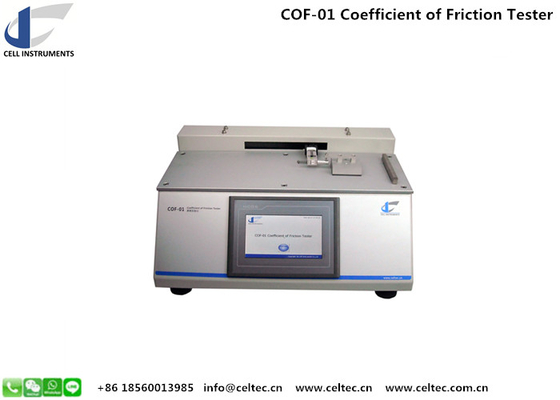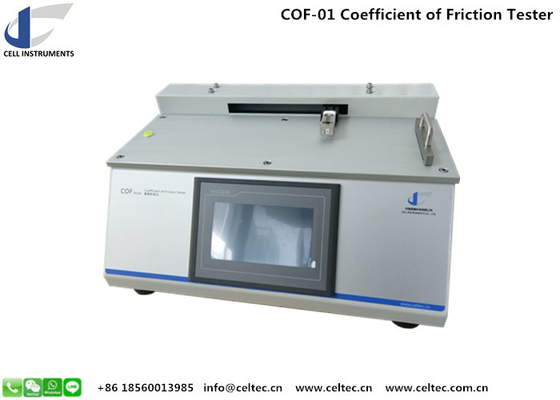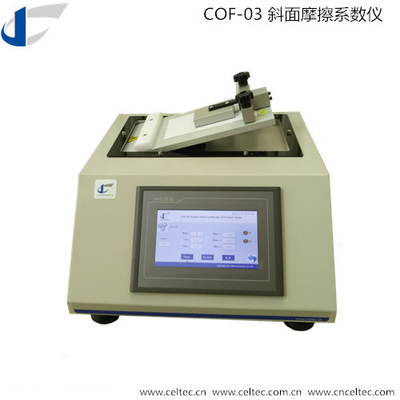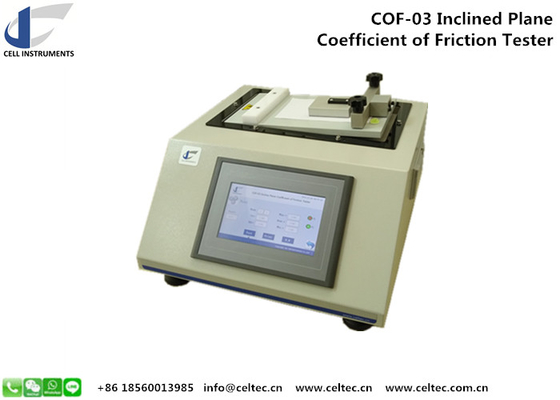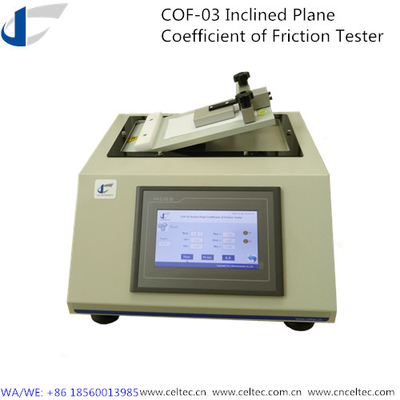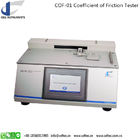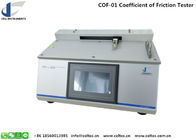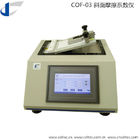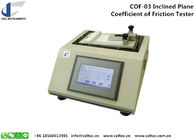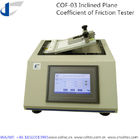Static and Dynamic Friction Coefficients For Rubber /Film /PaperCoefficient of Friction Tester

Contact me for free samples and coupons.
WhatsApp:0086 18588475571
Wechat: 0086 18588475571
Skype: sales10@aixton.com
If you have any concern, we provide 24-hour online help.
x| Power | Electronic | Usage | Paper Testing Instrument,Textile Testing Instrument,Other,Plastic Testing Machine |
|---|---|---|---|
| Standard | ISO8295,ASTM D1894 | Warranty | 12 Months |
| Product Name | Packaging Materials Coefficient Of Friction Tester | Function | Kinetic And Static Coefficients Of Coefficient Of Friction Test,coefficient Friction Tester,detecting Dynamic Frition Coefficient |
| Power Supply | 110~220V |
Static and Dynamic Friction Coefficients For Rubber /Film /PaperCoefficient of Friction Tester
Introduction to Friction Coefficients for Rubber Testing
When it comes to understanding the frictional properties of materials like rubber, films, and paper, knowing the friction coefficients for rubber is essential for ensuring product quality and performance. The Static and Dynamic Friction Coefficients for Rubber / Film / Paper Coefficient of Friction Tester is an advanced laboratory instrument designed to measure the static and kinetic friction coefficients of materials including rubber, plastic films, sheets, paper, and paperboard. This high-precision testing device plays a critical role in the manufacturing, packaging, and research industries where friction is a key factor in material performance.
By measuring the friction coefficients for rubber, manufacturers and researchers can better understand how rubber behaves when interacting with different surfaces, ensuring that their products meet specific standards for handling, durability, and usability.
How the Static and Kinetic Friction Tester Works
The Static and Kinetic Friction Tester operates on a simple yet effective principle. Two material samples are placed together: one is a long strip fixed on a flat surface, while the other is a square sample subjected to force via a sled. The test measures the frictional force that occurs when the two materials slip against each other, providing valuable data on both the static and kinetic friction coefficients.
This testing process helps determine how materials like rubber will perform under different conditions. By accurately measuring friction coefficients for rubber, industries can develop better materials that meet desired safety and performance standards.
Key Features of the Friction Coefficients for Rubber Tester
Our Static and Kinetic Friction Tester is designed with cutting-edge features that offer ease of use and accurate results, including:
- PLC Control & Touchscreen Operation: The user-friendly interface provides a seamless testing experience, allowing real-time monitoring of test data, results, and graphical curves.
- Dual Friction Measurement: Both static and kinetic coefficients of friction can be measured for rubber, ensuring comprehensive analysis of material properties.
- International Standards Compliance: The tester meets various international standards, including ASTM D1894, ISO 8295, TAPPI T816, and GB 10006, ensuring that the results are reliable and standardized.
- Real-Time Data Display: Results are calculated, analyzed, and graphically represented in real-time, making it easy to interpret data and draw conclusions.
- Data Output & Software Integration: RS232 output and professional software options for detailed analysis and data storage.
- Microprinting for Easy Test Results: Quick and clear printing of test results ensures easy record-keeping and compliance with industry standards.
Technical Specifications for Accurate Friction Coefficient Testing
The Static and Kinetic Friction Tester is equipped with high-quality components for accurate and reliable testing of friction coefficients for rubber and other materials. Here are the key specifications:
| Load Cell | 5 N(or as required) |
| Accuracy | 0.5 F.S. |
| Sled | 200±1g (or as required) |
| Sled Size | 63.5mm*63.5mm (or as required) |
| Test Speed | 100mm/min (ISO), 150mm/min (ASTM) |
| Dimensions | 540mm(L)*380mm(W)*240mm(H) |
| Weight | NW 21kg |
| Power | 110~220V 50/60Hz |
Applicable Standards for Friction Coefficients for Rubber Testing
Our Friction Coefficients for Rubber Tester complies with a range of recognized international standards, ensuring that your testing meets regulatory requirements:
- ASTM D1894 – Standard Test Method for Static and Kinetic Coefficients of Friction of Plastic Film and Sheeting
- ISO 8295 – Plastics – Film and Sheeting – Determination of Coefficient of Friction
- TAPPI T816 – Coefficient of Friction of Paper and Paperboard
- GB 10006 – Test Method for Coefficient of Friction of Paper and Paperboard
These standards help ensure that the friction coefficients for rubber are tested accurately and consistently across different materials.
Why Choose Our Friction Coefficients for Rubber Tester?
Understanding and controlling the frictional properties of rubber and other materials are critical to many industries, including packaging, food, medicine, and more. Here are a few reasons why our Friction Coefficients for Rubber Tester is the best choice for your testing needs:
- Comprehensive Testing: Measure both static and dynamic friction coefficients for rubber, films, and other materials, providing a full spectrum of friction analysis.
- High Precision: The PLC control system and touchscreen interface deliver real-time, accurate measurements, ensuring that you get reliable data every time.
- Ease of Use: With its intuitive user interface, the system is simple to operate, allowing your team to conduct friction testing with minimal training.
- Global Standard Compliance: Our tester meets critical international standards, ensuring that your testing aligns with global industry requirements.
Applications of Friction Coefficients for Rubber Testing
The Static and Kinetic Friction Tester is ideal for various industries where friction plays a crucial role in product development and quality control:
- Packaging Industry: Ensures that rubber and plastic packaging materials perform as expected in handling and storage.
- Food Industry: Tests the interaction between rubber materials used in food processing and packaging to maintain product integrity.
- Medical and Pharmaceutical: Verifies the friction properties of rubber components used in medical devices and pharmaceutical packaging.
- Research & Development: Assists in material testing and innovation by providing detailed friction data for new rubber-based products.
By accurately determining friction coefficients for rubber, companies can make informed decisions about material selection and process optimization.
Conclusion: Essential for Quality Control in Rubber-Based Products
Whether you're manufacturing rubber products, testing packaging materials, or conducting material research, understanding the friction coefficients for rubber is essential for maintaining quality control and performance standards. Our Static and Kinetic Friction Tester provides the accuracy, reliability, and flexibility needed to test friction coefficients for rubber and other materials in a wide range of industries.




